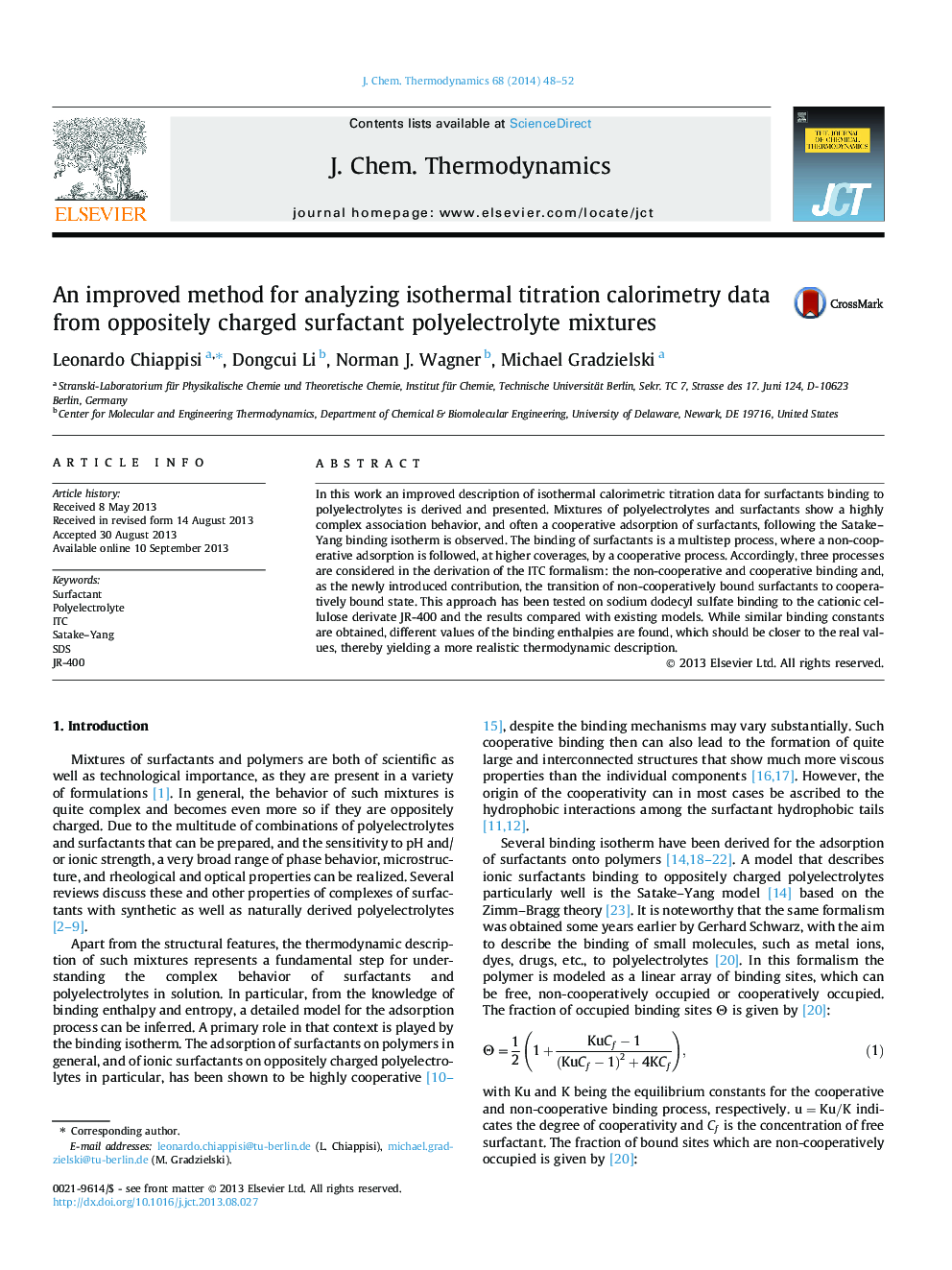| کد مقاله | کد نشریه | سال انتشار | مقاله انگلیسی | نسخه تمام متن |
|---|---|---|---|---|
| 215567 | 1426245 | 2014 | 5 صفحه PDF | دانلود رایگان |
• An approach to describe ITC experiments on surfactant-polymer mixtures is presented.
• The new formalism is compared to an approximated existing model.
• The improvement is needed for a consistent description of ITC experiments.
• The new formalism is tested on the binding of SDS to JR-400.
In this work an improved description of isothermal calorimetric titration data for surfactants binding to polyelectrolytes is derived and presented. Mixtures of polyelectrolytes and surfactants show a highly complex association behavior, and often a cooperative adsorption of surfactants, following the Satake–Yang binding isotherm is observed. The binding of surfactants is a multistep process, where a non-cooperative adsorption is followed, at higher coverages, by a cooperative process. Accordingly, three processes are considered in the derivation of the ITC formalism: the non-cooperative and cooperative binding and, as the newly introduced contribution, the transition of non-cooperatively bound surfactants to cooperatively bound state. This approach has been tested on sodium dodecyl sulfate binding to the cationic cellulose derivate JR-400 and the results compared with existing models. While similar binding constants are obtained, different values of the binding enthalpies are found, which should be closer to the real values, thereby yielding a more realistic thermodynamic description.
Figure optionsDownload as PowerPoint slide
Journal: The Journal of Chemical Thermodynamics - Volume 68, January 2014, Pages 48–52
